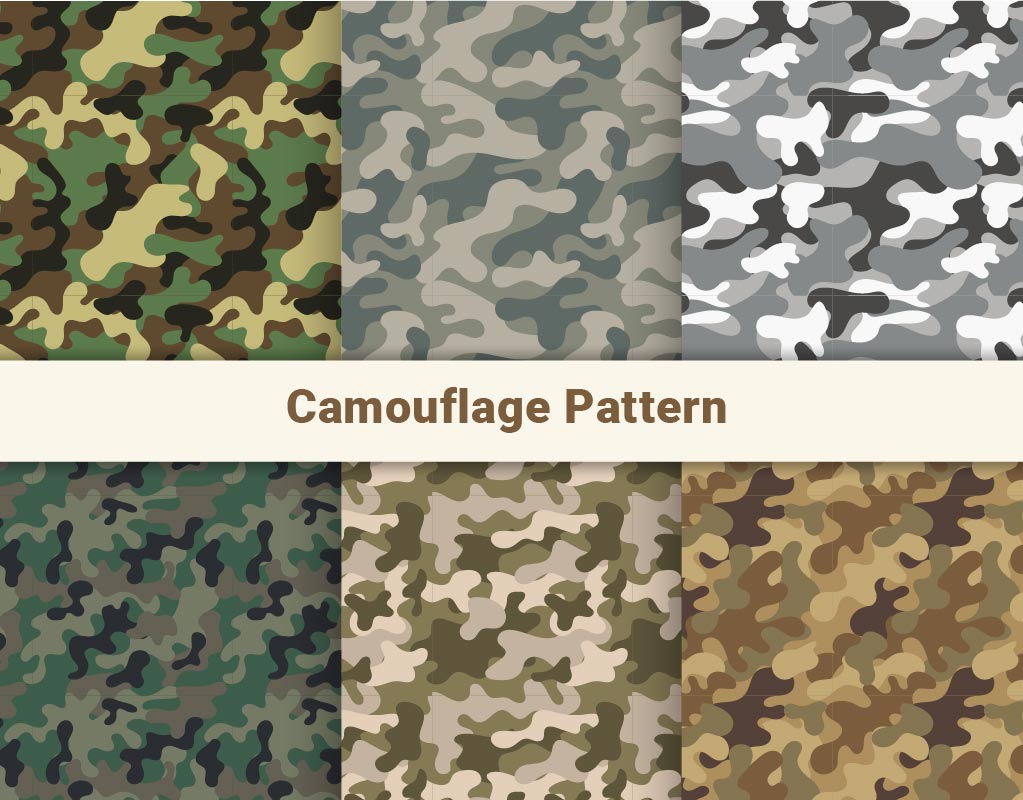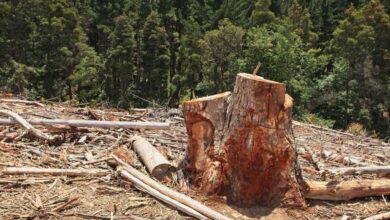The Ultimate Guide to Camouflage Patterns – Updated
“Camouflage” started from the Parisian slang signifying “to mask.” Therefore, military associations worldwide have developed several diverse types of camo to give their soldiers a strategically favourable position.
The primary military purpose of camouflage is to blend in the environment. The fractal greens, tans, and grays were forefront, and the turbulent example vanishing on the war zone couldn’t stand apart from any more grounded in the urban wilderness.
Table of Contents
While most company texts describe their fabrics as “camouflage” or “digital camouflage”, it is anything but a standard design and comes in all sizes, shapes, and colors.

Historical Overview of Masking
Hunter relied upon the red and black check-pattern (officially called “buffalo check”), prior to modern camouflage. They use it to break themselves up and be safe against their environment.
Hepp explained that ““Buffalo check was the original camo for the hunter” and “A lot of mammals, especially deer and elk, do not see color—at least not to the degree that we do. So the red-and-black appears gray to the animal while making [the wearer] more visible to other hunters. Nowadays, we have blaze orange for safety, but before this update, red was the safety color in the woods.”
The U.S. military began to experiment with wild camouflage patterns during World War I. They do this so that the hunters would buy their clothes from the army surplus stores because that’s all that was available.
By the 1980s, two companies emerged that began making “stick-and-leaf” camo gear, named Realtree and Mossy Oak. Their designs were based on realistic patterns that represent climates and landscapes other that just the jungle.
This invention has changed the game of camouflage clothing and gear. Companies like Columbia started using these patterns in their apparels that provide hunters with high quality sportswear instead of just cotton and wool.
“That’s where the commercial development of camo started to come about,” Hepp said.
Major Types of Disguise
As for today, there are three major types of camo;
- Traditional: It’s a classic military camo with green and brown patterns. Columbia’s duck-hunting camo is an evolution of this military-based look. It also includes the famous camouflage resembling tiger stripes.
- Stick-and-leaf: It’s a realistic, environment-inspired pattern developed by companies like Realtree and Mossy Oak. They offer different designs for deserts, rocky mountains, forests, and other landscapes.
- Digital: It’s a more recent camo pattern, as the name suggests, with a technical-looking pixelated print. Also originating with the military, digital camo was scientifically made using real-life imagery. In order to see what disappears best against various landscapes.
Moreover, hybrid camos incorporating more than one design are also available. For example, digital camouflage mixed with stick-and-leaf patterns, basically customization is now an easy game.
Let’s Find Out the Various Types of Camo Patterns
Brushstroke

Brushstroke camo pattern was grown first by British paratroopers in WWII. They utilize huge brushes to paint various stripes of shading on their khaki jeans before bouncing into hostile areas.
This homemade pattern was a favourite of British special forces during the 1960s because each soldier could customize his equipment to his environment.
Spanish Fort – Snap Fitness USA peptides for sale ‘I’m not going to be made into a monster,’ transgender woman says over fitness policy debate
Tigerstripe

The Tigerstripe pattern is developed by the Vietnamese in the 1960s. It started as a local reproduction of the French settlers’ design, but soon most Vietnamese marines adopted it.
The overlap of black stripes with browns and greens made Tigerstripe particularly useful in Southeast Asia’s bamboo-rich rainforests.
Duck hunter

This camo pattern was a favourite among duck hunters from the 1960s to the 1990s. It was initially known as the US M1942. American troops use this type of camo in the Pacific Theater during World War II.
Duck hunter has a solid background colour with large patches of at least two other colours superimposed on top.
ERDL

In 1948, the US Army Engineer Research and Development Laboratory (ERDL) planned a broadly useful woods design that would mirror the earthy coloured leaves, green of the grass, and dark of twigs.
It was not used until the Vietnam War
United States Woodland

This camo pattern is probably the first that comes to mind when you think of camo, as it is easily the most duplicated and modified pattern ever invented.
The four-colour design just took ERDL and expanded the brand by 60%.
Waterdrop

The raindrop camo pattern incorporates many vertical lines on a solid background to evoke the image of falling rain. The German Air Force experimented with early rain camouflage in World War II.
Rogue Territory brought the pattern back to relevance a couple of years ago with a series of pants and shorts made from East German twill.
Chocolate chips

Chocolate Chip is a six-colour pattern initially developed by the United States Army in 1981. The name comes from the black dots designed to mimic rocks that give a cookie dough look.
The Military of South Korea and Iraq throughout Africa adapt this type of camo.
Flecktarn

Flecktarn won a West German Army contest for designers in the mid-1970s and soon became a common German troops problem.
The leopard pattern took Europe by storm in the same way that Woodland did in North America.
Multicam

Intended to mix into any landscape, climate, or lighting condition, Multicam is the all-season tire in the disguise world. Crye Precision developed Multicam in 2003 for US troops in Afghanistan who regularly move between the Alpine and the desert but needed a pair of uniforms.
The iguana-like pattern has more than one hundred separate image layers and several composite colour spectra in each sample. This is one of the types of camo that makes the observer’s eye sees the colours that most closely resemble the environment. This cutting-edge design is a favourite of the most technical equipment vendors.
MARPAT

MARPAT was the first digital camouflage pattern for the United States Marine Corps and implemented across all Marine Corps forces in 2001.
The colour scheme seeks to update the United States Woodland pattern into a pixelated micro-pattern.
Camo-Blending Techniques
In the wild, there are four major types of natural camo and many best hunting camo patterns are based on these strategies, such as;
- Disguise: Disguising oneself as an inanimate object that the predator has nothing to do with. It’s like a twig, stick, leaf, rock, or other object. Examples include grasshoppers, walking sticks, and moths.
- Disruptive coloration: It includes disrupting the silhouette and breaking up the outline of the body. Majorly by using spots or stripes. Examples include tigers, leopards, and zebras.
- Mimicry: This defensive mimicry is using by prey to create the appearance of a more threatening animal. In order to intimidate its predator (example: owl butterfly). Whereas, aggressive mimicry wa heavily is use by predators to appear non-threatening to their prey (examples: orchid mantis, zone-tailed hawk).
- Concealing coloration: It’s called, matching color to the natural landscape. Examples include the arctic fox or white-tailed deer.
Camo patterns are usually depends upon one or more of these camouflage techniques. Particular ones are the disguise and disruptive coloration elements from the natural world where animals camouflage to hide or to keep an eye on the prey, like in Amazon rainforest etc.
Final Words
When talking about military and tactical equipment, the topic of camouflage always comes up, and so are the ghillie suits! Precisely, the ghillie suit is also a type of camouflage to resemble the background or environment.
Moreover, to your surprise, not only can you have ready-made ghillie suits or camouflage, but also, you can make your own. So do you want to know how to make ghillie suits?

This would be great for the rocky times we are in!!!!